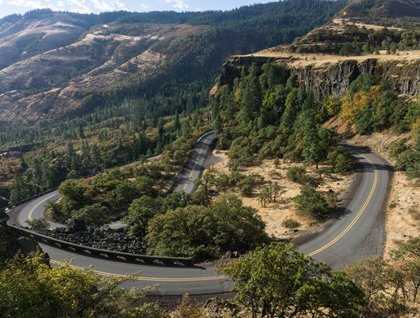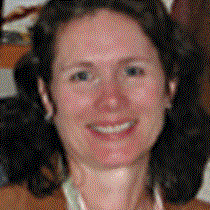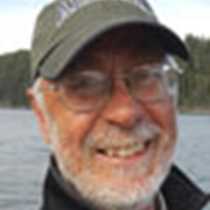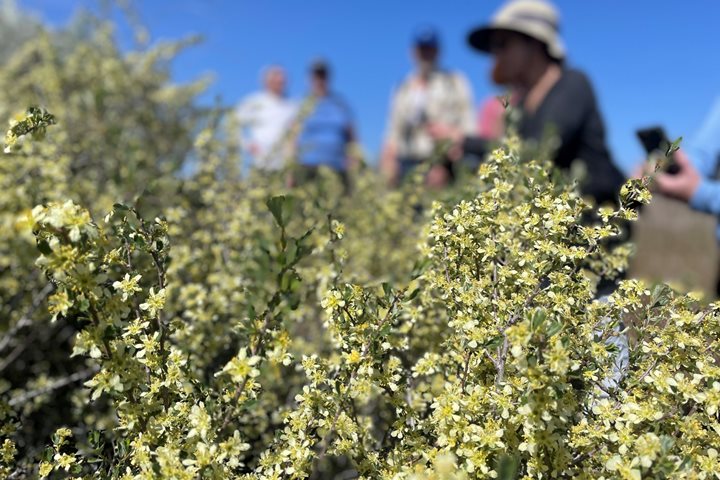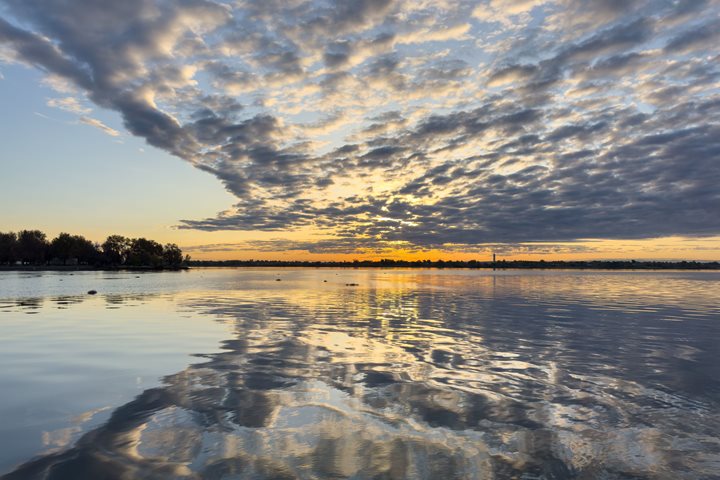After a hearty breakfast our intrepid group boarded buses and headed up hill to the Rowena Crest for a spectacular view of the Columbia River Gorge and the many salmon fishermen anchored in the river casting their lines in hopes of hooking the big one before the season closes for the year.
Next we visited the exceptional Columbia River Gorge Discovery Center where we learned about raptors, the history of the local salmon canning industry and Lewis and Clark. In addition we enjoyed exhibits on natural history beginning with the Ice Age. An exhibit based on the book Cargo by Lewis and Clark scholar Ken Karsminski detailed the provisioning and equipping of the Lewis and Clark Expedition is one of the best exhibits along their Trail. From the center we had the option of going back on the bus, hiking or biking back to the National Geographic Sea Lion where we feasted on a delicious Tuna Nicoise salad and a wild rice turkey soup for lunch. We then re-boarded the buses for a short drive over the river to one of Washington’s most celebrated cultural attractions, the iconic Maryhill Museum of Art built by visionary road builder Sam Hill. The eclectic collections housed in this museum include sculptures by Rodin, chess sets of all sorts from around the world and an impressive collection of Native American artifacts including a hat woven by the Chinook Indians similar to the ones Lewis and Clark purchased for their men at Fort Clatsop.
The Maryhill Museum sits on 5000 acres overlooking the Columbia River and is truly a sight to behold. A few miles upriver from Maryhill sits a replica of Stonehenge built by Sam Hill to honor the local soldiers who fought and died in World War I. Hill envisioned his Beaux Arts mansion as the centerpiece of an agricultural community based on Quaker principles, when that plan did not come to fruition, Hill followed the advice of several influential friends, including the Queen of Romania, and turned it into a museum. The state of Washington recently granted the museum a million dollars to repair the stucco exterior to ensure it remains a place of beauty and education where visitors can spend a leisurely day appreciating fine art and splendid scenery.
Returning to the ship via our expedition landing craft, we settled in for the evening and marveled as we passed through the guillotine lock of the John Day Dam, an impressive engineering feat and the tallest lock we will pass through on our journey. We spent the remainder of the evening enjoying conversation, libation, a wonderful meal, and reflected on another exceptional day aboard the National Geographic Sea Lion.

